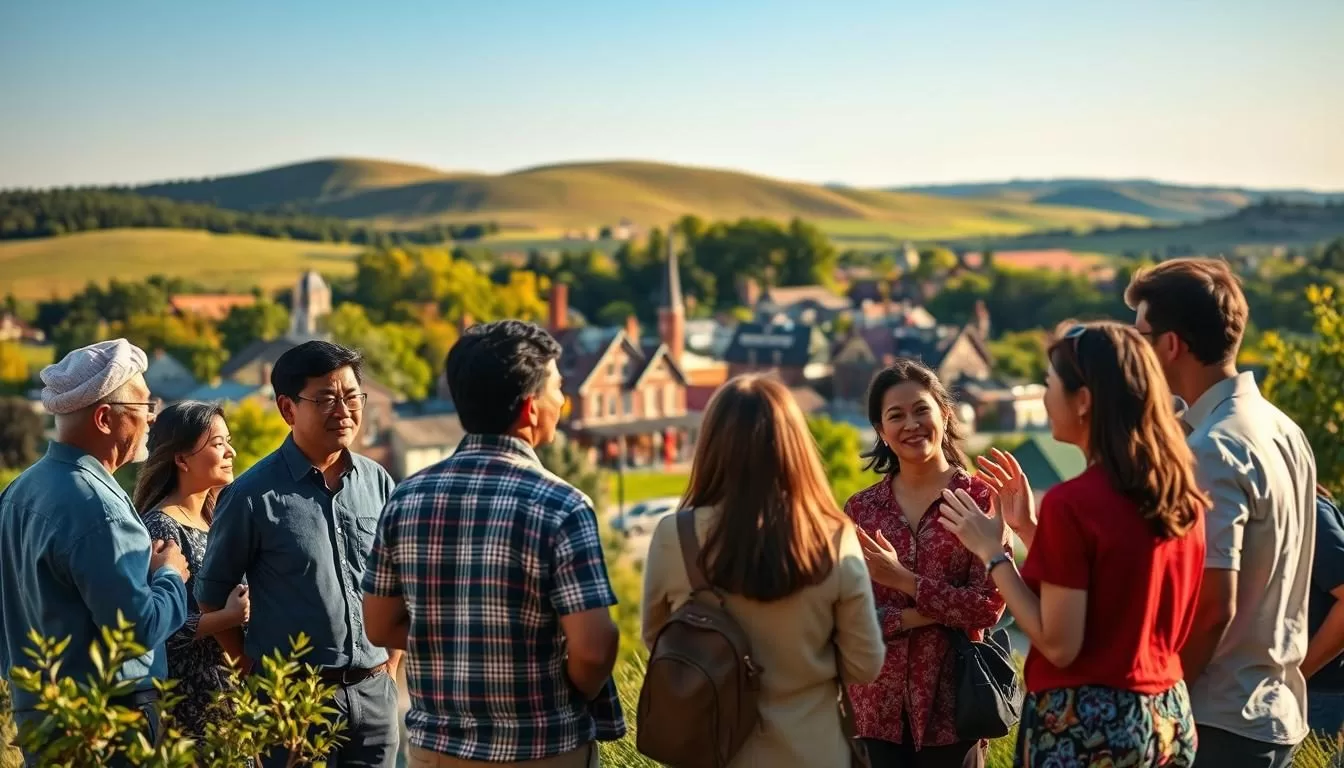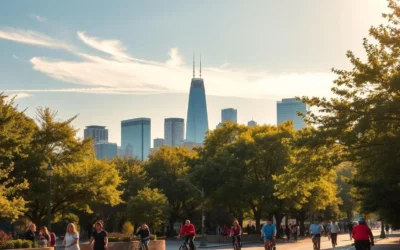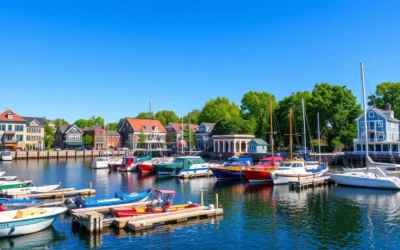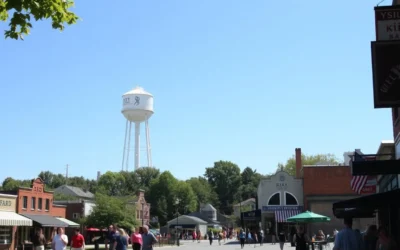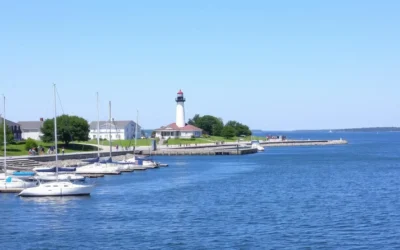✓ Accommodations ✓ Flights ✓ Rental Cars
As you explore the linguistic landscape of Michigan, you’ll discover a diverse tapestry of languages spoken across the state. While English is the predominant language, many residents speak other languages at home.
Approximately 9.9% of individuals over four years old speak a language other than English at home, which translates to around 993,377 residents. Moreover, about 3.24% of the population, or 325,105 people, have limited English proficiency.
This guide will take you through the complexities of Michigan’s language demographics, exploring the common languages spoken, the impact of immigration on language, and the distribution of languages across urban and rural areas.
The Linguistic Diversity of Michigan
As you explore Michigan, you’ll discover a vibrant tapestry of languages that reflect the state’s history and immigration patterns. The state’s linguistic diversity is a result of the interplay between its indigenous peoples, European settlers, and modern-day immigrants.
Historical Language Development in Michigan
Michigan’s language development has been shaped by its early history. The state was originally home to various indigenous languages.
Indigenous Languages and Early Settlement
The indigenous peoples of Michigan, including the Ojibwe, Odawa, and Potawatomi, had their own distinct languages. These languages played a significant role in the early linguistic landscape of the region.
European Immigration Influence
As European settlers arrived, their languages, such as English, French, and German, began to influence the linguistic landscape. This marked the beginning of a diverse linguistic environment in Michigan.
Modern Immigration Patterns and Language Distribution
In recent decades, Michigan has experienced significant immigration from various parts of the world. The number of Hispanic, Middle Eastern, and Asian immigrants has increased dramatically, contributing to the state’s linguistic diversity.
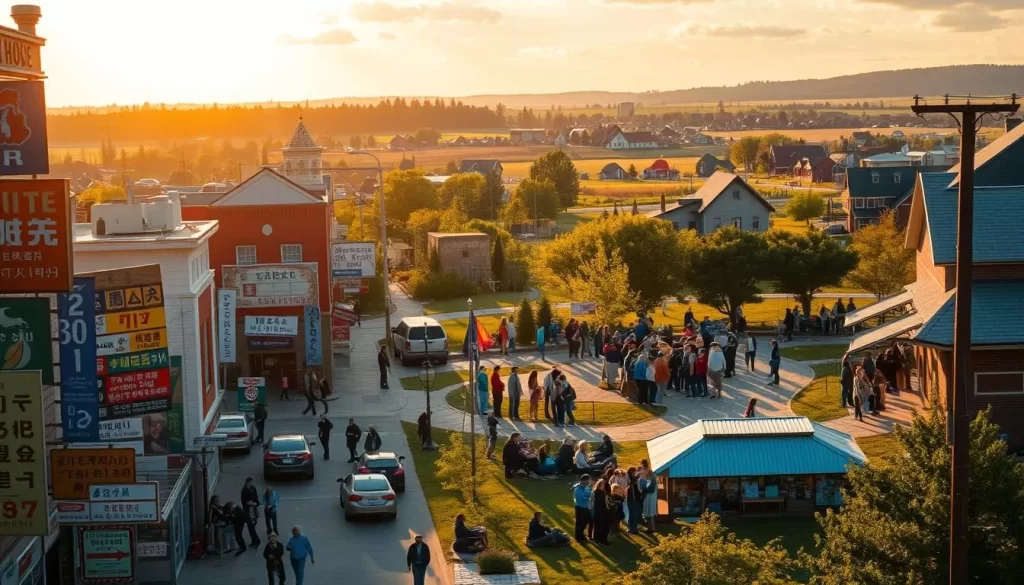
The Middle Eastern population in Michigan is one of the largest in the nation, with communities from Iraq, Jordan, Lebanon, Palestine, Syria, and Yemen. These communities have created vibrant language communities throughout the state.
African American Population and Language Impact
During the 20th century, there was a significant increase in the population of African Americans, especially in northern cities. By the start of the 21st century, there were more than one million African American residents. In Detroit, African Americans make up over four-fifths of the population, significantly influencing the city’s linguistic character.
As a result of these modern immigration patterns, communities in specific areas of the state have developed unique linguistic characteristics. When you consider the historical context and the impact of new immigrants on the linguistic landscape, it becomes clear that Michigan is a home to a diverse range of languages.
- The influx of Hispanic, Middle Eastern, and Asian immigrants has transformed Michigan’s linguistic landscape.
- The state is now home to a multitude of languages, reflecting its diverse cultural heritage.
- The population shift has led to the creation of concentrated language communities in various areas.
Michigan, United States: Official and Widely Spoken Languages
As you explore Michigan, you’ll discover a rich tapestry of languages that reflect the state’s cultural heritage. This diversity is a result of the state’s history, demographic makeup, and the influence of various immigrant communities.

English as the Dominant Language
English is the predominant language spoken in Michigan, as it is across the United States. The state’s residents primarily use English for daily communication, business, and education.
English Usage Statistics
While exact statistics are not provided, it’s understood that a significant majority of Michigan’s population speaks English as their primary language. This is consistent with national trends where English is the most widely spoken language.
Limited English Proficiency in Michigan
Despite English being the dominant language, there are residents with limited English proficiency. To address this, many universities and trade schools in Michigan offer “English as a Second Language” (ESL) courses. These programs are crucial for supporting immigrants and other non-native English speakers, enabling them to integrate into the community more effectively.
Language Demographics and Distribution
Michigan’s language demographics are influenced by its urban and rural populations, as well as its significant immigrant communities. The state’s linguistic landscape is varied, with different languages being more prevalent in certain areas.
Urban vs. Rural Language Patterns
Urban centers like Detroit exhibit different language patterns compared to rural areas. In cities, you’re more likely to hear a variety of languages due to the diverse population. For instance, Detroit’s demographic makeup, with African Americans making up over four-fifths of the population, has significantly influenced the city’s language varieties and dialects.
Language Communities in Detroit and Major Cities
Detroit and other major cities in Michigan are home to distinct language communities. Notably, Arabic-speaking communities are concentrated in Detroit and Toledo, making Arabic the second most common non-English language in Michigan, after Spanish. This reflects the state’s significant Middle Eastern population, one of the largest in the nation.
- The distinct language patterns in urban and rural Michigan create a varied linguistic landscape.
- Detroit’s demographic makeup has influenced its language varieties and dialects.
- Arabic is Michigan’s second most common non-English language, reflecting the state’s significant Middle Eastern population.
- Concentrated Arabic-speaking communities are found in Detroit and Toledo.
- Michigan’s language distribution differs from expectations of European language dominance.
- Major cities have formed various language communities that maintain their linguistic heritage.
- Universities and trade schools offer ESL courses to support diverse linguistic communities.
Top 10 Non-English Languages in Michigan
The linguistic diversity in Michigan is a testament to the state’s history of immigration and cultural exchange. As a result, the state is home to a multitude of languages, with numerous residents speaking languages other than English at home.
Spanish: The Most Common Non-English Language
Spanish is the most widely spoken non-English language in Michigan, reflecting the state’s significant Hispanic population. With a substantial number of Spanish speakers, Michigan offers various resources to cater to this community.

Arabic: Second Most Common Non-English Language
Arabic is another prominent language in Michigan, with a sizable community of speakers. The state hosts various Arabic translation services and cultural events, catering to the needs of this population.
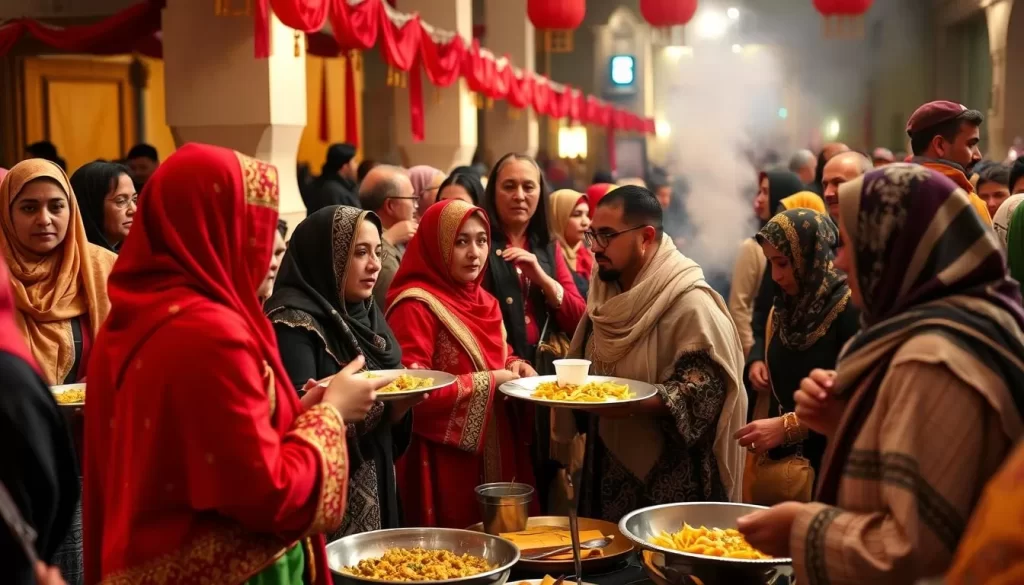
Chinese Languages (Including Cantonese and Mandarin)
Michigan is also home to a significant number of Chinese language speakers, including both Cantonese and Mandarin. This reflects the state’s diverse Asian community and the growing importance of Chinese cultures in the region.
German: Historical Presence and Current Speakers
German has a historical presence in Michigan, dating back to the early European settlers. While the number of German speakers has evolved over time, the language remains an important part of the state’s cultural heritage.
Amharic, Somali, and Other Afro-Asiatic Languages
The Afro-Asiatic language family, including Amharic and Somali, is represented in Michigan with approximately 30,293 speakers, making up about 0.32% of the population. This diverse group contributes to the state’s rich linguistic tapestry.
Bengali: Growing Linguistic Community
Bengali is another significant language in Michigan, with around 21,627 speakers, representing about 0.23% of the population. This growing community is a testament to the state’s ongoing cultural diversification.
French and Cajun Influence
French and Cajun languages have a historical presence in Michigan, with approximately 21,522 speakers, making up about 0.23% of the population. This reflects both the state’s historical connections to French Canada and the influence of newer immigrants.
Hindi Speakers in Michigan
Hindi is spoken by around 20,831 residents in Michigan, representing about 0.22% of the population. This community is primarily concentrated in urban and university areas, highlighting the state’s diverse cultural landscape.
Polish: Historical and Contemporary Usage
Polish remains an important language in Michigan, with approximately 18,036 speakers, making up about 0.19% of the population. This reflects the state’s historical and contemporary connections to Polish culture.
Tagalog and Filipino Languages
Rounding out the top 10 is Tagalog, including Filipino languages, with around 15,674 speakers, representing about 0.17% of Michigan’s population. This community contributes to the state’s multicultural environment.
These diverse language communities not only enrich Michigan’s cultural landscape but also contribute to its economic and social vitality. Understanding and appreciating these languages is crucial for fostering a more inclusive and connected community.
Conclusion
As we’ve explored the complex linguistic landscape of Michigan, it’s clear that the state’s language diversity is a significant aspect of its cultural identity. Michigan’s linguistic heritage is characterized by a dominant English language and a diverse array of other languages, reflecting its history of immigration and cultural exchange.
The state’s residents with limited English proficiency face challenges in accessing essential services, highlighting the importance of translation and interpretation services in bridging communication gaps. Industries such as healthcare, legal, and education require localization and translation services to effectively serve Michigan’s diverse population.
By understanding Michigan’s linguistic diversity, you can better appreciate the need for language access services that cater to the state’s evolving language needs. As demographics continue to shift, adapting to these changes becomes increasingly important for institutions across all industries. Partnering with a professional language services provider like Acutrans can facilitate effective communication with Michigan’s diverse population, ensuring equal opportunities for all residents.
The above is subject to change.
Check back often to TRAVEL.COM for the latest travel tips and deals.
